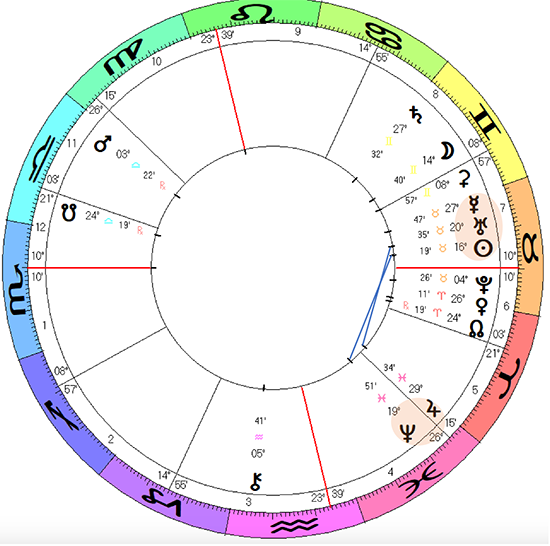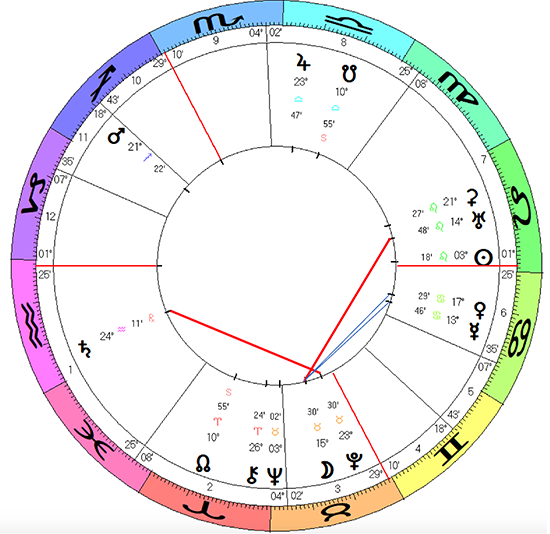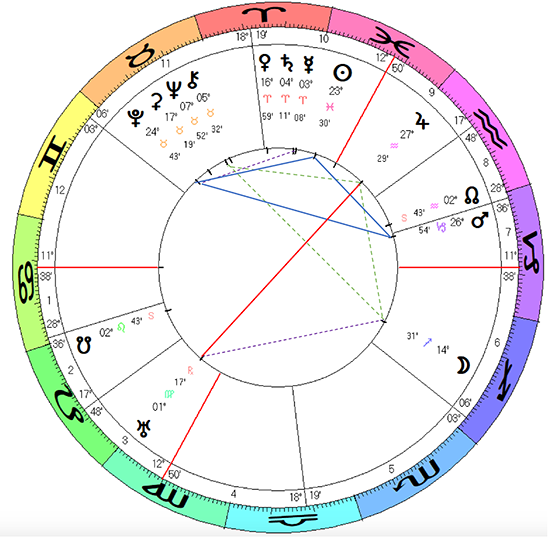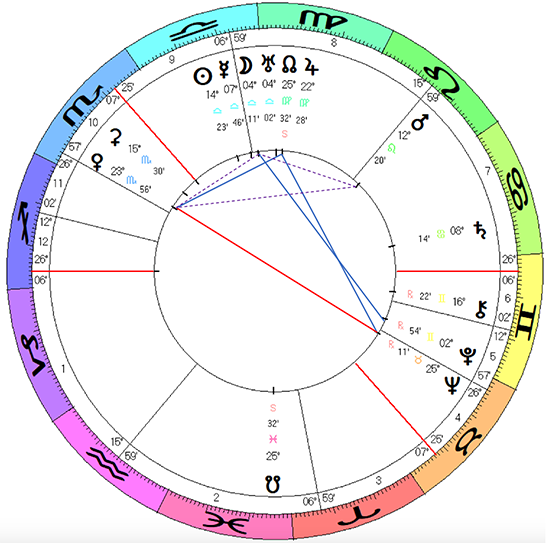Dreams are very useful. In the relaxed state of sleep, our minds can reshuffle the events of the day, sometimes bringing important themes to light, sometimes just depositing extraneous thoughts into the rubbish bin. It could be compared to a nightly optimization of our mental hard disk, giving trillions of neurons the opportunity to clear the mind in preparation for the next day.
One of the extraordinary things about dreams is that while we are dreaming them, they seem real. It’s a great relief to wake up from a nightmare, when we may have done something awful, or someone may have done something awful to us, and then to discover it was just a dream. Buddhist teachers point out that precisely the same process is happening in our waking life too – we think it is real.
The Illusion of Self
Their teachings say that we suffer because we identify with an illusory sense of self, and they go to great lengths to show that there is in fact no independent, continuous or solid self. In this they agree with the latest neuroscience, which asserts that the sense of self is arrived at through an incremental familiarization with sense impressions, thoughts about them, interactions with others in a consensus environment and the cultural system that goes along with all that.
Without a rigid sense of separate identity, the experience of objects via the senses becomes far more vivid and real. It’s a bit like being absorbed in a great film, or being in love, or just enjoying nature – the less sense of a self that is experiencing these things, the more intense they become. Without the intermediary of self, consciousness and the object of consciousness are merged. The self proves to be an artificial construction bridging momentary events, each event arising dependent on the last.
Dreams as a means of Transformation
Apart from using dreams as a metaphor for the illusory nature of waking life, dreams themselves can be a powerful vehicle for personal transformation. Whilst in the West there is a tradition for the interpretation of dreams, in the East, or at least in Tibetan tradition, it is the energy in the dreams which is important, and the best dreams to have are nightmares. Bad dreams are related to an underlying universal fear of death, so nightmares offer the opportunity to confront these fears.
In practice, this is not too difficult. If you wake up in a sweat after a terrifying monster has almost got hold of you, the idea is to imagine going back into the dream, where you have two options. You are not actually going to die, so why not have a go? The first and easiest option is to grab a weapon at hand (you’ll find one – it’s a dream) and beat your adversary into submission, and keep on doing so until you have established your superior strength. The second option, more terrifying, is to allow the monster to get to you and kill you. This is like the death of an old self, and leads to the rebirth of a new and better integrated self. Both options are extremely energizing.
The Interpretation of Dreams
Whatever comes up in dreams has of course direct relevance to events that have taken place in your life. These events arise as a result of behavior, and behavior is reflected in the dynamics of the personal horoscope, so the horoscope can be used as a way of interpreting dreams, just as waking life events can be interpreted in the horoscope. Someone with a Venus-Saturn aspect may dream of feeling alone at a party. Someone with a Mars-Pluto aspect may have nightmares about intimidating men. I’m always dreaming of not finding my notes at a public lecture, or not being able to make it to a destination. (Could be my Mercury-Neptune square). So dreams can be integrated into the astrological consultation as extra clues to interpretation.
It was in the late 19th century that the inner world of the Unconscious started to be explored, reflecting perhaps the 492-year conjunction cycle of Pluto and Neptune in Gemini which started anew in the 1890’s. Sigmund Freud was born in 1856 which was the time of the last Jupiter-Neptune conjunction in Pisces that repeated here in 2022. He wrote The Interpretation of Dreams in 1899 – the result of his therapy sessions with clients, mostly female. His basic theory was that dreams were a gateway to an unconscious area of the psyche and a form of wish-fulfilment.

Sigmund Freud: May 6th 1856. 18.30 Pribor. Czech Republic. AS 10.10 SC
Freud’s horoscope, is ideal for exploring the nature of the unconscious, and what was called the talking cure: Moon in Gemini in the 8th house. With Scorpio rising and co-ruler Mars retrograde, his motivation was to dig deep into the psyche. The secret of his chart is to follow the movement of progressed Mercury, which in the 1880’s went stationary retrograde at 4.59 Cancer in the 8th – dwelling in an exact sextile to Pluto for many years. Mercury progressed sextiled Pluto and conjoined Saturn in Gemini in the 8th house three times during the course of his life. He was a mapmaker of the unconscious.
Prophetic Dreams
Carl Gustav Jung famously had a series of dreams and visions prior to the onset of World War I. This is an example of a dream being literal and prophetic. But Jung, influenced as he was by Freud, assumed that it was a reflection of his own nature and that he was menaced by psychosis. (Note 1)
“… in the spring and early summer of 1914, I had a thrice-repeated dream that in the middle of summer an Arctic cold wave descended and froze the land to ice. I saw, for example, the whole of Lorraine and its canals frozen and the entire region totally deserted by human beings. All living green things were killed by frost. This dream came in April and May, and for the last time in June, 1914.”
Under normal circumstances it is reasonable to assume that a dream is just a product of your own thoughts, rather than reflecting world events. Possibly it is the fact that Jung’s Moon in the 3rd house was square Uranus and channeled the rare Pluto-Saturn square that he had prophetic visions. He pioneered the idea of the collective unconscious, and therefore was attuned to collective cosmic cycles. But the frozen ice of his dream would certainly also be reflecting Moon square Uranus in his chart and his theories of the Great Mother/Terrible Mother archetypes. Whilst Jung has a wonderful sextile between the Moon in Taurus and Venus in Cancer, which are in mutual reception, his moon is otherwise under a lot of pressure from the outer planets.

Carl Gustav Jung. July 26th 1875. 19.24. Kesswil, Switzerland. AS 1.25 AQ
Helpful Dreams
People who work with lucid dreaming – the ability to consciously enter the dream state – recommend preparing by resolving to dream and to be lucid prior to falling asleep. Some people find this useful if there is an issue that they wish to resolve, hoping that the solution will arise in a dream.
This certainly has been effective for two of the great scientists of the 20th century. Albert Einstein discovered the principle of relativity after a dream when he was sledding down a mountainside going so fast he reached the speed of light, at which point the stars in his dream changed their appearance in relation to him.

Albert Einstein. March 14th 1879. 11.30 Ulm, Germany. AS 11.38 CN
Einstein proposed the theory of relativity in 1905 when there was an opposition of Uranus to Neptune – something that happens every 172 years, and channels extraordinary imaginative discoveries. This opposition fell very close to his Ascendant/Descendant. Clearly, the Jupiter-Uranus opposition from the 9th to 3rd house reflects his scientific genius, but – as often is the case with creative geniuses – it is the harmonic aspects which reveal the extra magic. In Einstein’s case Jupiter is quintile and at the midpoint of Moon and Neptune – a conjunction in the 5th harmonic. Furthermore his Moon is exactly septile Uranus – a conjunction in the 7th harmonic. According to astrologer Nick Kollerstrom Moon-Uranus septiles often characterize the eureka moment of discovery.
Niels Bohr – the Danish physicist – has a Moon-Uranus conjunction within 9 minutes of arc, and this conjunction is at the midpoint of and septile Mars and Venus – a conjunction of all four planets in the 7th harmonic, so he has a lot of the magic juice of invention.

Niels Bohr. October 7th 1885. 13.15 Copenhagen, Denmark AS 26.06 SG
Bohr often related how an inspirational dream led to his discovery of the structure of the atom. One night he began dreaming about atoms and saw the nucleus of the atom with electrons orbiting it, just as planets orbit the sun. His vision about atomic structure was a huge breakthrough, and he was later awarded the Nobel Prize for Physics for this dream-inspired discovery.
Bohr’s horoscope nicely channels the Uranus-Pluto trine of the mid-1880’s – an aspect that is due to repeat in the late 2020’s (when there are sure to be once again world-shattering discoveries). Pluto often relates to atomic structure, which in trine to Uranus gives scientific transformation. And of course his Jupiter-Neptune trine gives easy access to the magical world of dreams.
With a very strong Neptune, I’m a bit of a dreamer myself, and I’ve had my own prophetic dreams. The following dream is probably coming from my own Venus-Pluto conjunction exactly trine the Moon. When I was 21 and traveling in India I dreamed that a huge saucer-shaped spacecraft landed, suffused in blue light. We men had all been expecting it, and we had gathered all our favorite things on tables at the side of the avenue that the beautiful alien beings approached on, so that we could take them with us. The women were back in the houses, we hadn’t planned on taking them. But the aliens walked straight past us and invited the women instead, completely ignoring us. That was in 1970, just as the women’s lib movement was starting. I was left with a feeling of guilt and sadness. I wished they could have taken MeToo.
Adrian Ross Duncan – December 13th 2022
1. Memories, Dreams, Reflections – C.G.Jung
2. Einstein’s Dreams – Alan Lightman
